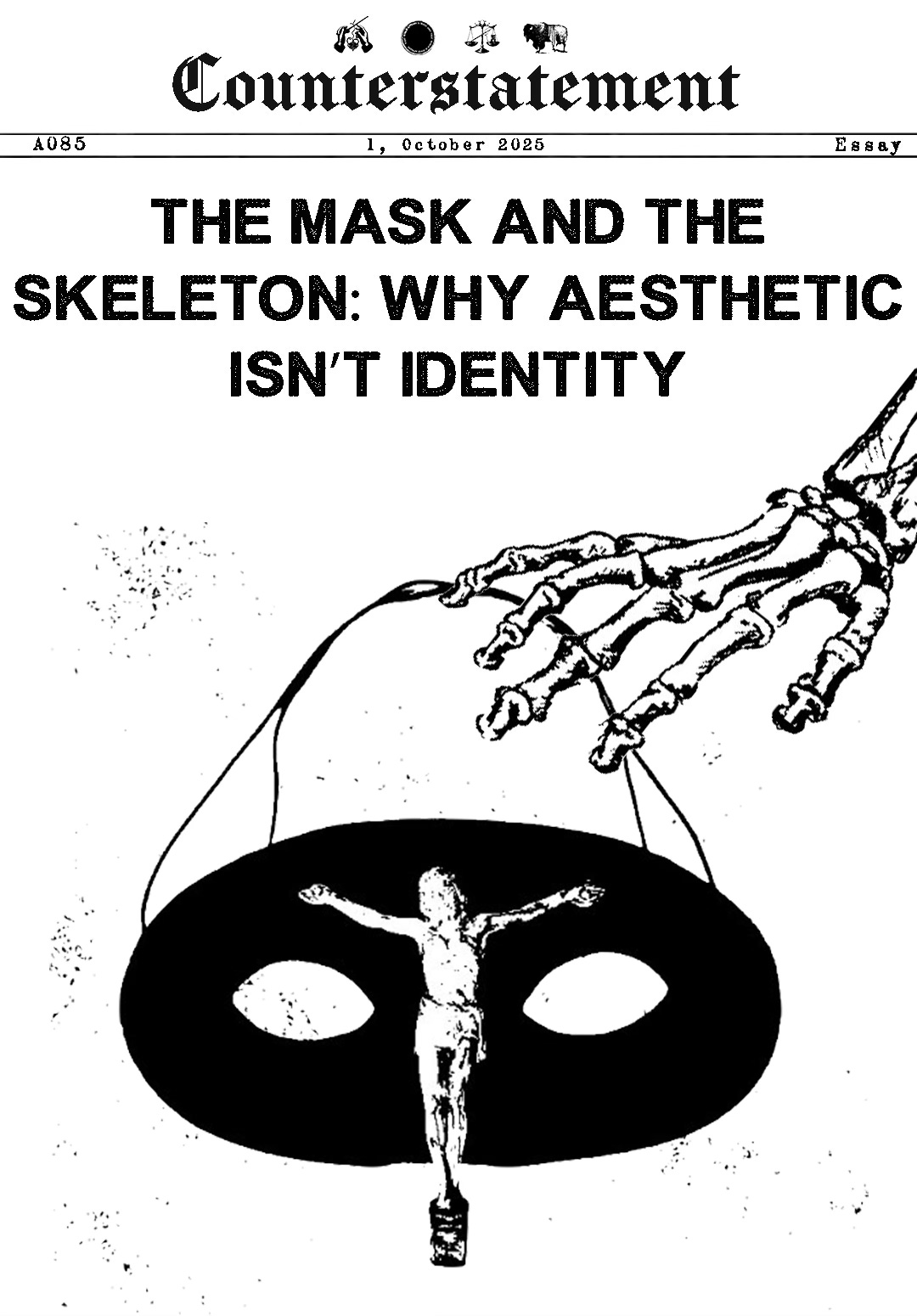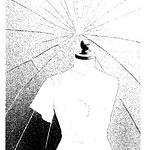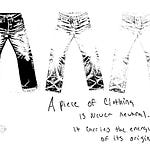Why Aesthetic Isn’t Identity
Aesthetics are not identity.
Aesthetics is how a brand appears, identity is what a brand is.
The two are not interchangeable.
Aesthetic is the visible surface, mutable and performative. Identity is the invisible skeleton, the underlying architecture that gives everything form and coherence. Without the skeleton, the mask collapses into incoherence the moment cultural winds shift.
In other words, aesthetic might catch the eye, but it’s identity that holds everything together. It’s the difference between changing your outfit and changing your DNA. The surface can shift endlessly, but if there’s no deeper structure beneath it, the entire thing eventually falls apart.
2. The Ontological Divide
This distinction is not cosmetic, it is ontological.
Aesthetic belongs to the realm of appearance. It’s expressive, but it’s not self-sustaining. Identity belongs to the realm of being. It provides continuity through time, grounding expression in a stable philosophical core.
What this really means is that identity gives a brand something solid to return to, no matter how trends shift or aesthetics evolve. It’s the anchor beneath the surface. Aesthetic might change season to season, but identity is the belief system and worldview that keeps everything coherent.
Nietzsche understood this divide when he wrote about the Apollonian (form, order) and the Dionysian (chaos, raw life).
The Apollonian represents structure, clarity, and rules. The Dionysian represents energy, emotion, and instinct. Real creative power happens when these two collide and coexist.
True artistic power arises from the tension between these forces, not from the surface alone. That tension is what gives art its electricity. It’s not about picking one side, but holding both form and chaos in a way that feels alive.
Similarly, in fashion, aesthetic is merely Apollonian surface. Identity is the deeper Dionysian force, the animating principle, the internal logic that drives a designer’s world. Think of aesthetic as the outer shell, while identity is the heartbeat that gives it meaning. The surface can change, but the underlying philosophy remains constant, and that’s what gives a brand its distinct gravitational pull.
When designers mistake surface for structure, they build castles of sand. They may rise quickly, driven by the viral economy of novelty, but without an internal architecture, they eventually disintegrate under the weight of cultural evolution.
We see this all the time. A brand explodes overnight because the aesthetic is hot, but without real backbone, it crumbles as soon as trends move on. Surface can create a moment, but structure creates longevity.
3. The Skeleton Beneath the Mask
Great brands endure because they are structured. Not bureaucratically, but metaphysically.
Beneath every aesthetic language lies a philosophical skeleton, a worldview, a set of tensions, a vision of beauty, and a belief about humanity. This is the invisible framework that holds everything together when trends shift or external contexts change.
Take Rick Owens. He isn’t simply “gothic futurism.” His draped, monumental silhouettes emerge from a worldview that’s obsessed with decay, sensuality, and rebellion. His aesthetic is the outer skin of a deep metaphysical stance. What you see on the runway isn’t a random style decision, it’s the physical manifestation of a philosophy he’s been building for years.
Or look at Phoebe Philo’s Céline. It wasn’t minimalist because minimalism happened to be fashionable. It was minimalist because her identity was rooted in clarity, intellect, and female subjectivity. The clean lines, the restraint, the sense of quiet authority all served those beliefs. Her aesthetic was never chasing a look, it was expressing a worldview.
And then there’s Margiela. His deconstructed seams weren’t just clever quirks. They were ontological provocations, challenges to authorship, perfection, and identity itself. The raw edges weren’t there to look “edgy.” They pointed toward real philosophical questions about who makes fashion, what perfection means, and how identity is constructed.
In each of these cases, the aesthetic is a natural consequence of the identity. If you change the surface, the underlying logic remains. That’s why these designers can evolve over time without losing their magnetism. They are guided by a skeleton, a coherent internal structure that gives their work both flexibility and depth.
4. Why Aesthetic-First Brands Fail
When a brand builds outward from aesthetic, it anchors itself to something inherently unstable, cultural trends, visual memes, and collective taste. All of these are constantly shifting. What feels magnetic today can feel tired tomorrow. As soon as the trend moves or the audience becomes desensitized, the brand loses its orientation.
But when identity comes first, the opposite happens. A coherent philosophical core generates a visual language that can change and adapt while still staying true. In other words, the visuals can evolve, but the meaning doesn’t disappear. That’s why enduring brands feel elastic yet unmistakable. They can transform their garments, their imagery, their styling, and still maintain an unbroken thread of meaning through it all.
The failure of aesthetic-first brands is inevitable because they build effect before cause. They decorate before they define. They sculpt a mask without ever constructing the skeleton that allows it to live. And we see this constantly. Brands skyrocket because their aesthetic hits at the right cultural moment, but without any internal structure, they collapse the second that moment passes. They’re chasing the look, not building the logic underneath it.
5. Strategic Implications
For any designer who’s serious about longevity, the order of operations has to be inverted. Most people start with the surface, but lasting brands always begin from the inside out.
First, you excavate the identity. This means digging into the beliefs, contradictions, emotional charges, and philosophical tensions that make up the brand’s core. This is where the soul of the brand lives. It’s the raw, honest material that gives everything else meaning. Without this step, everything that follows is just decoration, disconnected from any real substance.
Next, you codify that identity into structural principles that guide all creative decisions. In practice, this means translating emotions and ideas into a clear framework. It’s like building the internal blueprint of the brand. These principles become the compass that ensures every future choice, whether it’s design, marketing, or storytelling, stays aligned with the core vision.
Then, and only then, do you manifest the aesthetic. At this stage, the visual language becomes a deliberate expression of that internal structure, not a substitute for it. Instead of chasing trends or guessing what might work, the aesthetic flows naturally from the identity you’ve already defined. This is the moment when the brand starts to feel inevitable, as if it couldn’t exist any other way.
And this isn’t abstract theorizing. This is how every culturally resonant fashion house actually operates. The skeleton provides coherence across everything, collections, campaigns, casting, environments, and narratives. It ensures that each new aesthetic iteration isn’t some random departure, but a natural unfolding of the brand’s core identity over time.
6. Closing Insight
Fashion rewards immediacy, but culture remembers coherence. Trends can bring a burst of attention, but structure is what gives a brand the power to last. The brands that endure are the ones whose beauty is structural, not superficial. They treat aesthetic as language, not as identity itself.
You can change the mask a hundred times, and if the skeleton beneath is intact, the world will still recognize you. But if there is no skeleton, no architecture of meaning, then even the most exquisite mask will eventually rot. All that will remain are images, lost and forgotten in the endless scroll.
In the end, it’s the structure that holds a brand together through shifting cultural winds. Aesthetic might catch the eye, but identity keeps it alive.












